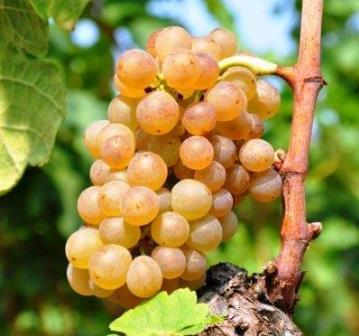
?
Marsanne is the most popular white wine grape planted in the Northern Rhone wine region. In Hermitage, where the fruit reaches its best expression, it is usually blended with Roussanne and Clairette. Marsanne adds depth and rich textures to the wine. Through blending, the grape helps produce rich, deeply colored wines with flavors and scents of roasted nuts, pears, white peaches, honeydew melon, spice and flowers. With age, Marsanne based wines deepen in color and complexity. Wines produced from Marsanne are quite rich and can even develop a silky, exotic, oily texture.
Marsanne can produce both dry white wine and sweet white wine. When Marsanne is used to produce sweet wine. When sweet wine is produced, more often than not, it is made using the Vin de Paille method. this labor intensive wine making process is also known as a straw wine. Straw wines take their name due to the process that requires the grapes to be dried on straw mats in the sun, before the extremely concentrated, sweet, raisined juice is pressed and fermented.
Marsanne is a food friendly white wine grape. Marsanne pairs best with all types of seafood and shellfish, especially the richer varieties like lobster, crab, shrimp, seabass, clams and mussels. However, Marsanne also pairs perfectly with chicken, veal, pork dishes, spicy flavors and Asian cuisine. Marsanne works well with cream sauces and with a diverse array of cheese, both hard and soft.
Marsanne is a vigorous grape. Small in size, the bunches are not too compact, which allows for air to penetrate the bunches. The roots have the ability to burrow deep into the soil, looking for nourishment. Marsanne prefers rocky, hillside soils and dry climates. When ripe, the berries take on a brownish, golden hue. The picking time is crucial because as the grapes achieve ripeness, the fruit can lose its acidity rather quickly.
Marsanne grows well in the steep hillside vineyards with a terroir of clay, granite, chalk and limestone soils that are typical of those that are found all over the Northern Rhone Valley. It’s a bit finicky, preferring some rain during the dry, summer months. Marsanne is susceptible to mildew and oidium in humid conditions. The vines, which take a long time to mature can live for quite a while. Marsanne is a much more interesting grape as the vine ages. When the vines are young, they are quite high yielding, and have the potential for producing more of a dilute characteristic. The grapes become interesting with at least 10 years of age. The grape can live a long time. The grape can live a long time. In fact, some old vines are known to be over 100 years of age! The grapes are small in size, with a skin that combines gold, green and brown hues. Marsanne is an interesting grape to harvest. Growers tend to pick the fruit just before it achieves optimum levels of ripeness, in order to retain as much acidity as possible to add balance and freshness to the wine.
The top producers using Marsanne in Hermitage are JL Chave and Chapoutier. The fruit is also grown in Australia, Spain, Switzerland and America. In California, Tablas Creek and Sine Qua Non are two of most successful wineries using the grape. Sine Qua Non has produced non traditional blends which can include Chardonnay. JC Cellars situated in the Napa Valley produces one of the best Marsanne based wines from California. However, even when you add up all the acreage in all those countries, France maintains the largest amount of Marsanne planted in the world in their vineyards, and most of that is in the Northern Rhone Valley. In France, Marsanne is widely planted in Hermitage, Crozes Hermitage, St. Joseph and St Peray. In those appellations Marsanne is most often blended with Roussanne. Although, there are growers in the Northern Rhone Valley that produce wines using 100% Marsanne. Marsanne can also be found in Costieres de Nîmes, Coteaux du Tricastinu Ventoux, Cotes du Luberon and the Cotes du Rhone appellations.
